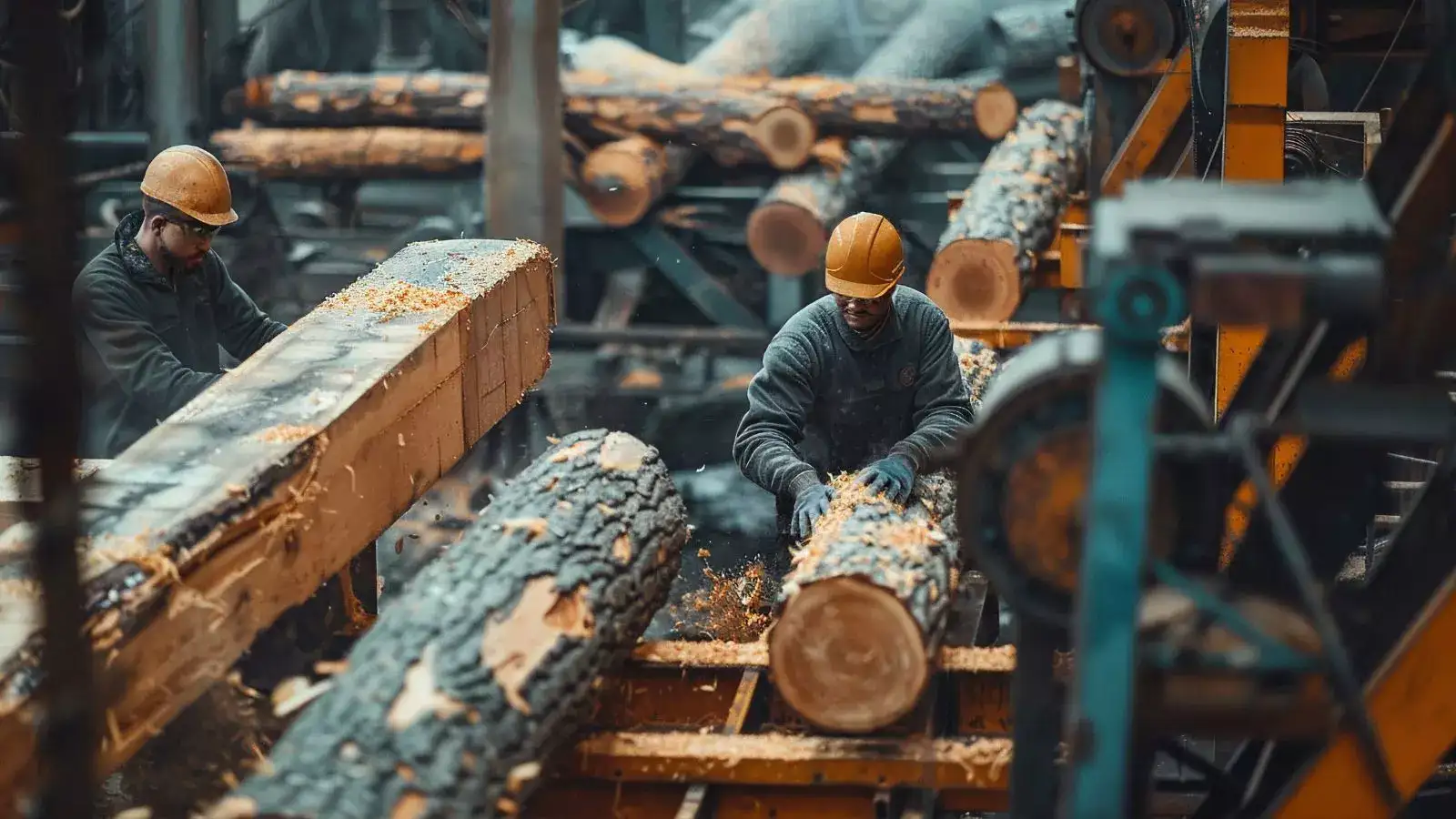The World’s Most Dangerous Jobs And Why The Statistics Are Shocking
Employment is essential for survival, but some professions are so hazardous that they put workers’ lives in constant danger. In these roles, individuals work under life-threatening conditions daily while trying to support their families. Despite proper safety protocols, some jobs still come with unavoidable risks.
Here are the five most dangerous professions globally with the highest fatality rates, according to international statistics:

Logging workers remain at the top of the list of the world’s most dangerous jobs . They operate heavy machinery in forests filled with towering trees. At any moment, a falling tree or equipment malfunction can cause a fatal accident. Harsh weather such as strong winds, freezing cold, and heavy rainfall adds further danger. According to the U.S. Bureau of Labour Statistics, around 97.6 out of every 100,000 workers die annually, making logging one of the deadliest professions worldwide.
2. Fishermen:

Deep-sea fishermen face life-threatening risks every single day. Boats in the open ocean are exposed to sudden storms, powerful waves, and mechanical failures. The long hours and strenuous physical labour increase exhaustion-related risks. The Centres for Disease Control and Prevention (CDC) reports that around 100 out of every 100,000 fishermen lose their lives each year, highlighting that fishing remains one of the world’s most dangerous occupations.

Although flying feels safe for travellers, pilots and flight engineers are constantly alert to serious hazards. Engine malfunctions, unpredictable weather, and the risk of mid-air collisions are persistent threats. Long working hours and irregular schedules also affect their mental and physical well-being. As per the International Labour Organization (ILO), 58.4 out of every 100,000 pilots die while on duty each year.

Roofers work at significant heights, often on steep and unstable surfaces. Without proper safety equipment, the risk of slipping or falling increases dramatically. Continuous exposure to sunlight and chemicals also impacts their health. According to the Occupational Safety and Health Administration (OSHA), nearly 51.5 out of every 100,000 roofers face fatal accidents annually. The job demands extreme alertness and physical strength.

Iron and steel workers are a crucial part of large construction projects. They operate at great heights while handling heavy machinery and large steel structures. A single misstep or failure in safety systems can result in a serious or fatal accident. The Bureau of Labour Statistics states that about 41.5 out of every 100,000 workers in this field lose their lives on the job. The work requires immense physical endurance and bravery.
All these professions are vital for society’s smooth functioning. However, many precious lives are still lost each year due to insufficient safety measures. Governments and safety organisations must enforce strict regulations to protect these workers. High-quality safety gear, proper training, and regular inspections are essential to saving lives.
These workers continue to perform their duties despite the dangers. Their dedication plays a key role in ensuring that everyday life continues without disruption.

Here are the five most dangerous professions globally with the highest fatality rates, according to international statistics:
1. Logging Workers:

Logging workers remain at the top of the list of the world’s most dangerous jobs . They operate heavy machinery in forests filled with towering trees. At any moment, a falling tree or equipment malfunction can cause a fatal accident. Harsh weather such as strong winds, freezing cold, and heavy rainfall adds further danger. According to the U.S. Bureau of Labour Statistics, around 97.6 out of every 100,000 workers die annually, making logging one of the deadliest professions worldwide.
You may also like
- 'Cameras analyzing my every move but...' Erika Kirk speaks up amid row over viral hug with JD Vance
- Hyundai Motor joins Singapore to boost future mobility cooperation
- Shafali Verma makes 'God sent me here' comment true with sensational innings against South Africa in final
- Ministers, ISRO Chairman hail successful launch of India's heaviest communication satellite
- VP C. P. Radhakrishnan congratulates ISRO and Indian Navy on successful launch of CMS-03
2. Fishermen:

Deep-sea fishermen face life-threatening risks every single day. Boats in the open ocean are exposed to sudden storms, powerful waves, and mechanical failures. The long hours and strenuous physical labour increase exhaustion-related risks. The Centres for Disease Control and Prevention (CDC) reports that around 100 out of every 100,000 fishermen lose their lives each year, highlighting that fishing remains one of the world’s most dangerous occupations.
3. Pilots:

Although flying feels safe for travellers, pilots and flight engineers are constantly alert to serious hazards. Engine malfunctions, unpredictable weather, and the risk of mid-air collisions are persistent threats. Long working hours and irregular schedules also affect their mental and physical well-being. As per the International Labour Organization (ILO), 58.4 out of every 100,000 pilots die while on duty each year.
4. Roofers:

Roofers work at significant heights, often on steep and unstable surfaces. Without proper safety equipment, the risk of slipping or falling increases dramatically. Continuous exposure to sunlight and chemicals also impacts their health. According to the Occupational Safety and Health Administration (OSHA), nearly 51.5 out of every 100,000 roofers face fatal accidents annually. The job demands extreme alertness and physical strength.
5. Construction Steel Workers:

Iron and steel workers are a crucial part of large construction projects. They operate at great heights while handling heavy machinery and large steel structures. A single misstep or failure in safety systems can result in a serious or fatal accident. The Bureau of Labour Statistics states that about 41.5 out of every 100,000 workers in this field lose their lives on the job. The work requires immense physical endurance and bravery.
All these professions are vital for society’s smooth functioning. However, many precious lives are still lost each year due to insufficient safety measures. Governments and safety organisations must enforce strict regulations to protect these workers. High-quality safety gear, proper training, and regular inspections are essential to saving lives.
These workers continue to perform their duties despite the dangers. Their dedication plays a key role in ensuring that everyday life continues without disruption.









